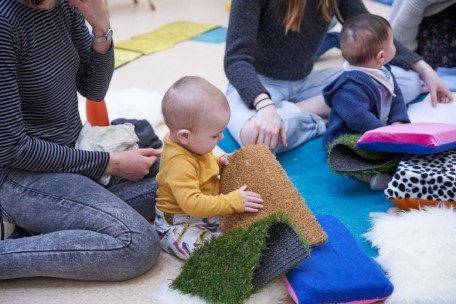In one of my earlier blogs I wrote about an Italian marriage chest or cassone, and this week’s object is, in a sense, a sequel to that. It is a birth tray (in Italian, desco da parto), an object that was typically commissioned to celebrate the birth of a first-born son in elite Florentine families. Its author, Apollonio di Giovanni (c.1415-1465), was a Florentine painter who ran a workshop specialising in this type of object, together with marriage chests and other types of painted furniture; you could probably order your cassone from him on the occasion of your marriage and go back, in due course, for your desco da parto. Apollonio’s style is characterised by crowded compositions, small figures, and an abundance of gilding, and reflects his training as a manuscript painter, a trade he continued to practise alongside his work as a painter of furniture. His visual language is very different from the more ‘progressive’ style seen in altarpieces and frescos by contemporaries such as Fra Filippo Lippi, suggesting either that Apollonio catered for a somewhat conservative clientele, or that there was a preference for this style in domestic furnishings.

Apollonio di Giovanni, The Triumph of Love, Florence, Italy, Tempera on Poplar panel, Medieval and Renaissance Galleries, Room 64, Case 2 © Victoria and Albert Museum, London
Deschi da parto were decorated with subjects appropriate to childbirth. This might be a religious narrative, such as the Birth of the Virgin, but secular themes were more popular, and typically these would be themes that celebrated love and feminine power. Our V&A birth tray is no exception. It depicts The Triumph of Love, a popular subject taken from a famous poem by the fourteenth-century humanist Francesco Petrarch. On a central triumphal car, or processional float, draped in cloth-of-gold, rides Cupid, the god of love, blindfolded and armed with his bow and arrow. Two of his acolytes are perched at the front of the car, aiming their arrows at a young man seated between them, dressed in red – a colour associated with passion – with his arms bound behind him; he is love’s captive or victim. Behind the car is a stylised landscape, and around it is a crowd of elegantly dressed men and ladies, sporting the type of extravagant fashions worn at wedding festivities, including ‘Burgundian’ horned head-dresses, and gowns with sweeping sleeves. In the foreground are two famous couples associated with love and the power of women: Delilah, armed with a large pair of scissors, cutting the hair of a recumbent, nude and distinctly un-macho Samson, and Phyllis, riding astride the philosopher Aristotle, identified by his red scholar’s gown and sage’s white beard, who was lured into this foolish behaviour by her charms. Respectively they signify the power of love over physical and intellectual strength. Though these details supposedly pay tribute to the power of women, they seem to be a bit of a backhanded compliment; it’s hard to imagine that a Florentine wife would have been encouraged to view Delilah or Phyllis as role models!
Like marriage chests, birth trays played an important part in family ritual, in this case the mother’s lying-in, when she would receive visitors in the privacy of her camera. On these occasions, refreshments were brought in on the birth tray (as can be seen in contemporary paintings, such as Domenico Ghirlandaio’s fresco of The Birth of the Baptist in Santa Maria Novella, Florence), covered with a cloth to protect its painted surface. Once the lying-in was over, the birth tray became a treasured family possession, again like marriage chests. It might be displayed on the walls of the camera, like the Medici-Tornabuoni birth tray, now in the Metropolitan Museum, New York, commissioned to mark the birth of Lorenzo the Magnificent in 1449, which hung in his bedroom at the time of his death in 1492. The reverse of the V&A birth tray is painted with the arms of the Florentine Samminiato and Gianfigliazzi families, commemorating a marriage that took place in 1537, long after the date of its manufacture; presumably it was originally made for a member of one of these families, whose original arms may have been overpainted in 1537 when the desco, by now a precious heirloom, was reworked for its new owners.
“Twenty Objects for Twenty Years” is a series of articles written by Paula Nuttall, Director of the Late Medieval to Early Renaissance Year Course, exploring the V&A’s extensive Renaissance collections. You can find the rest of the series along with other posts from the Learning Department at the V&A on their blog.


